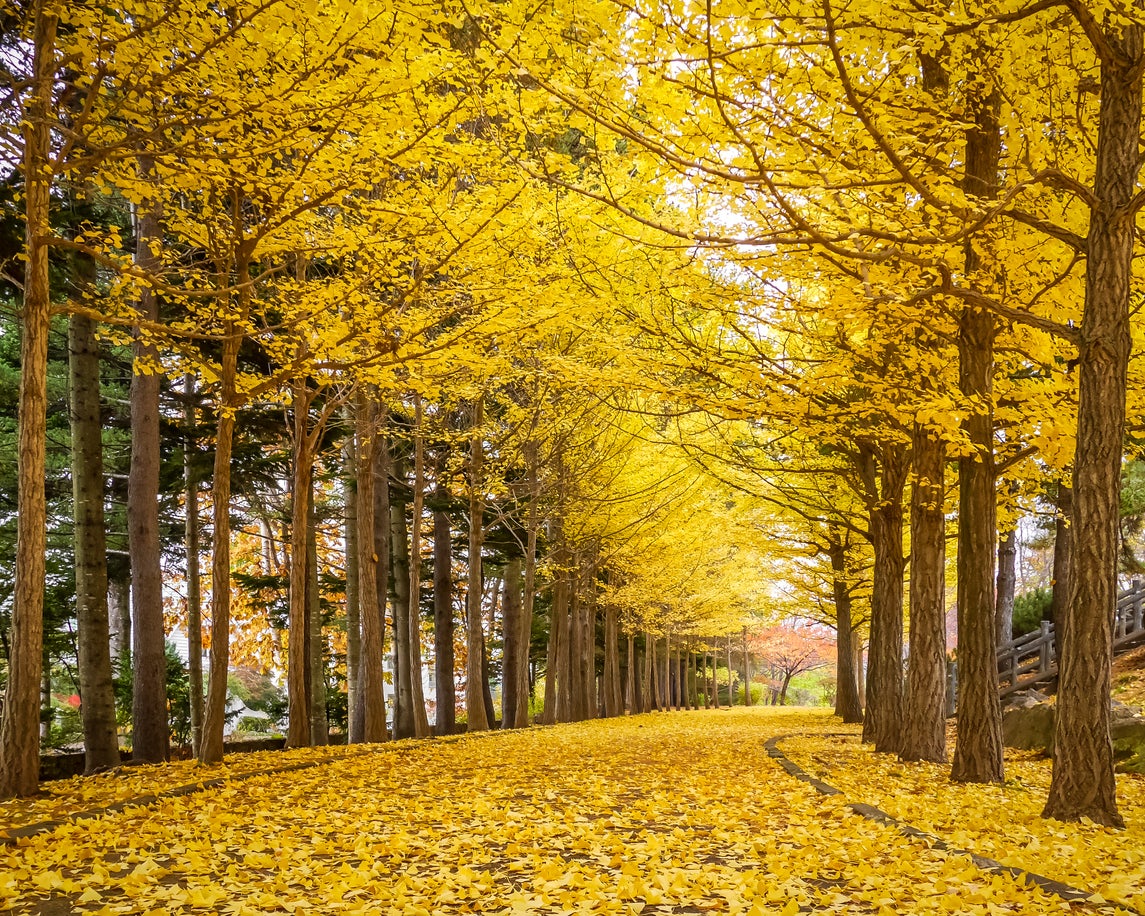Common Ginkgo Cultivars: How Many Kinds Of Ginkgo Are There


Ginkgo trees are unique in that they are living fossils, largely unchanged for nearly 200 million years. They have pretty, fan-shaped leaves and trees are either male or female. In the landscape, different kinds of ginkgo can be big shade trees and attractive ornamental additions to gardens. There are several varieties from which you can choose.
About Ginkgo Cultivars
A ginkgo tree can grow up to 80 feet (24 m.) high and 40 feet (12 m.) wide, but there are also smaller varieties. All have the special, fan-shaped leaves. Ginkgo leaves turn vibrant yellow early in the fall, and they do well in urban environments. They require minimal care once mature.
One important consideration when choosing a ginkgo tree of any variety is the fact that mature female trees produce fruit. The fruit begins to develop after about twenty years and it can be pretty messy. Many would also describe the smell as unpleasant.
Ginkgo Tree Varieties
A male ginkgo tree is a great addition to most gardens. You can even choose the growth habit, size, and other characteristics by selecting from among several types of ginkgo tree:
- Fairmount. This is a columnar ginkgo, meaning its growth habit is narrow and upright. This is a good choice for narrow spaces with plenty of vertical room.
- Princeton Sentry. Also a columnar variety, this one is a little taller and wider than Fairmont and grows relatively quickly.
- Autumn Gold. Autumn Gold is a canopy tree, great for where you have a lot of space and want shade. It will grow up to 50 feet (15 m.) high and 35 feet (11 m.) wide.
- Chase Manhattan. This is a dwarf, shrub-like ginkgo that will only reach a height of about 6 feet (2 m.).
- Majestic Butterfly. This type has variegated leaves, green streaked with yellow. It is also a smaller tree at just 10 feet (3 m.) high at maturity.
- Lacy Ginkgo. The lacy cultivar is so called for its leaves, which have a textured edge that gives the appearance of lace.
Male and female ginkgo cultivars often have different names, so be sure you select a male tree if you want one that is low maintenance and won’t produce fruit.
Sign up for the Gardening Know How newsletter today and receive a free copy of our e-book "How to Grow Delicious Tomatoes".

Mary Ellen Ellis has been gardening for over 20 years. With degrees in Chemistry and Biology, Mary Ellen's specialties are flowers, native plants, and herbs.